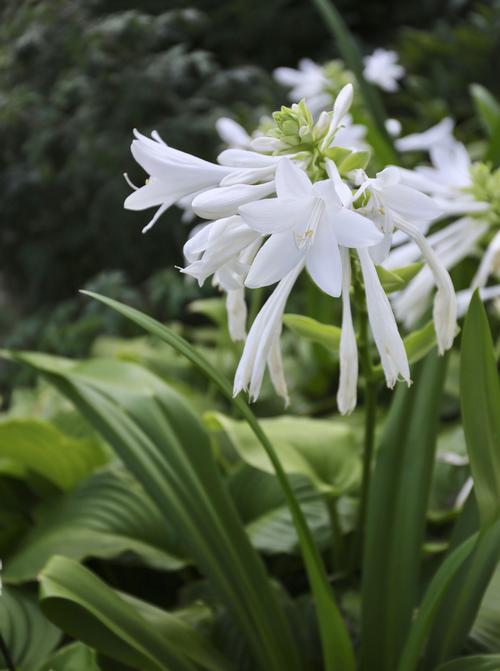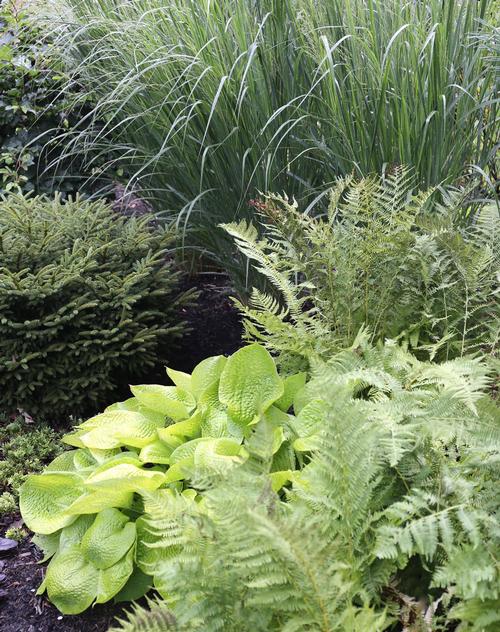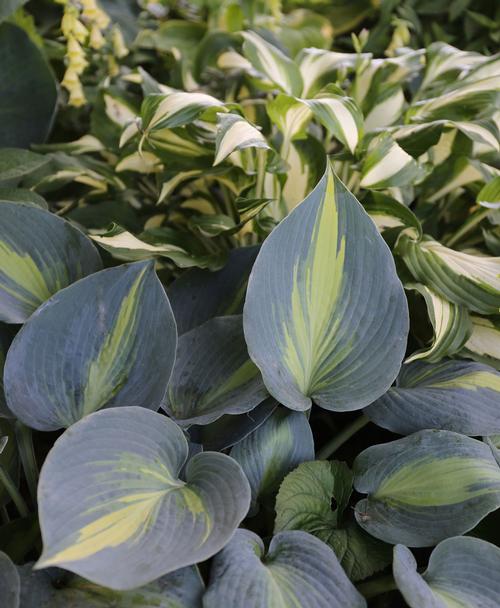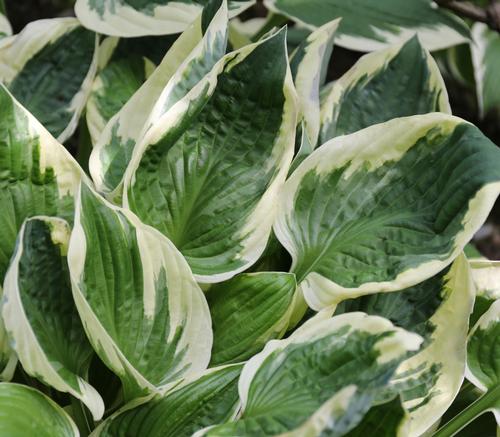7 TIPS FOR GROWING HOSTAS
Hostas are the go-to perennial for shady gardens. And for good reason. These rugged plants live for decades and require virtually no attention. Rake away the old leaves each spring and you’re done! Here are some tips to help you take full advantage of these easy and rewarding shade-loving plants.

Hostas are Available in Small, Medium and Large
It’s hard not to be impulsive when you’re buying plants, but with hostas, it’s important to match the size of the plant with the space that’s available. Most hosta plants look similar when they’re in a pot, but things change once they’re in the ground! Some will stay about 6 inches tall, while others can grow almost waist high with an equal spread.
Unlike most perennials, hostas rarely need to be divided — unless they outgrow their allotted space and start crowding neighboring plants. So be sure to read the label and think about how the plants will fill the space once they reach their mature size. If you choose varieties that grow too large, or position the plants too closely together, you’ll soon be doing some dividing and transplanting.

Get Creative with Leaf Sizes, Shapes, Colors and Textures
There are thousands of registered hosta varieties to choose from. Leaf colors include green, chartreuse, gold and dusky blue, and many cultivars have variegated foliage with white or gold edges, splotches, streaks or splashes. Leaf shapes can be round, oval, heart-shaped or lance-shaped. The texture of the leaves may be smooth, pleated, dimpled or puckered. By taking advantage of these differences, you can weave a beautiful tapestry of hosta foliage that provides lots of visual interest all season long.
Most hostas have relatively large leaves and a dense presence in the landscape. To lighten them up, combine them with plants that have a finer texture, such as ferns or the lacy leaves of astilbe, goatsbeard, thalictrum and bugbane. Plants with a grassy texture such as Japanese forest grass (Hakonechloa), carex or acorus are also good for providing textural contrast.

Hostas Have Flowers, Too!
Though hostas are grown primarily for their foliage, most cultivars also produce flowers sometime between mid-June and September. Hosta flower spikes rise well above the foliage and feature tubular blossoms that open gradually from the bottom up. Most varieties have pale lavender flowers, but they may also be pink or white.
Most hosta flowers are not particularly showy, but they do attract hummingbirds. Some gardeners remove the flower spikes because they feel they detract from the rest of the plant. This causes no harm but will disappoint the bees and hummingbirds that normally feed on the nectar. An exception is Hosta plantaginea, (shown above) which has spectacular flowers that are also very fragrant.

The Quality of Shade Matters
You can assume that all hosta varieties will grow well in the dappled light beneath shade trees or with 4 to 5 hours of morning light. Leaf colors are usually brighter and display more pronounced variegation when the plants get plenty of light.
If you garden in a southern area, you will need to be careful about where you plant hostas. Too much sun and not enough moisture can damage the foliage. If the leaves begin showing scorched edges or brown tips, the plants should be moved to a different location where they will get more shade and more moisture.
In the northern tier of the country, hostas can sometimes be grown in full sun — as long as they get plenty of water. When selecting plants, be aware that some cultivars can tolerate more sunlight than others. Fragrant hybrids (which have H. plantaginea in them) are generally more sun tolerant. Those with blue-green foliage fade to yellow-green if they get too much sun. To learn more, read: How Sunlight Affects Plants.

Hostas are Thirsty Plants
To keep your hostas looking lush and full, make sure they get about an inch of water per week. Depending on the weather and where you live, natural precipitation may not be adequate. Consistent moisture is especially important during the first few years when the plants are getting established. Hostas that are planted under shade trees usually need to be watered regularly, because the trees will be the first to grab any natural moisture. Covering exposed soil with mulch and/or planting thickly enough to shade the soil will reduce evaporation. If you do need to water, it’s best to apply it deeply and infrequently.
Though hostas need consistent moisture during the growing season, they require very little in the winter. In fact, wet winter soils can make the plants susceptible to crown and root rot. The best soil for hostas is well-drained with plenty of moisture-absorbing organic matter such as compost or leaf mold.

Hostas Have a Few Enemies
If you already battle slugs and snails, hostas may not be a good fit for your yard. These slimy pests nibble on tender hosta shoots and may continue to snack on the leaves during the growing season. Slug bait and beer traps can help, but the best solution is planting hostas with thicker than average leaves. These “slug resistant” cultivars are far less appealing to slugs. Examples include Blue Angel, Sum and Substance, June and Halcyon.
Unfortunately, deer will go well out of their way to munch on hostas. Scent deterrents can be effective as long as you begin spraying before the plants emerge and continue spraying weekly and after heavy rain. Deer repellants are also available in pellet form. To learn more, read: How to Control Slugs and Snails.

An Easy Landscaping Solution
Low-growing hostas are ideal for planting beneath shrubs or along the edge of a shady walkway. For early season color, add spring-blooming bulbs such as daffodils and alliums. The bulbs will flower early, and the hostas will be happy to hide their fading foliage.
Hostas are excellent companions for other shade loving plants, but gardens that include only hostas can also be surprisingly beautiful. Start with at least 3 to 5 plants of 3 to 5 different varieties. Cluster each variety into an irregular shape and then put the groups side by side to create a pleasing tapestry of color and texture.
Longfield Gardens offers more than a dozen tried and true hosta varieties, which are available HERE.
